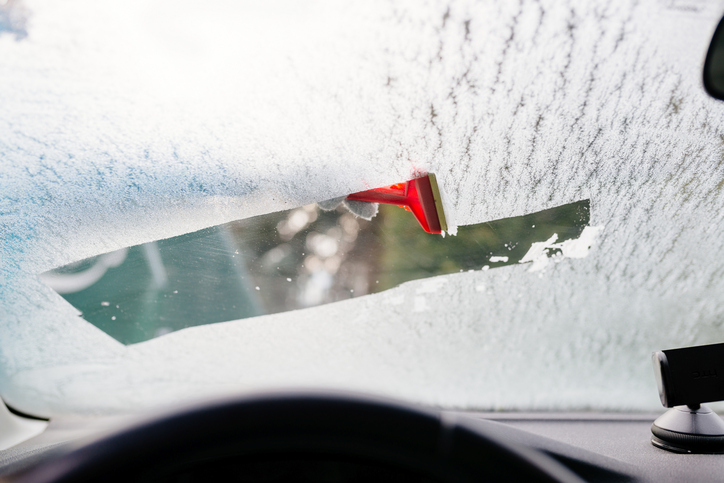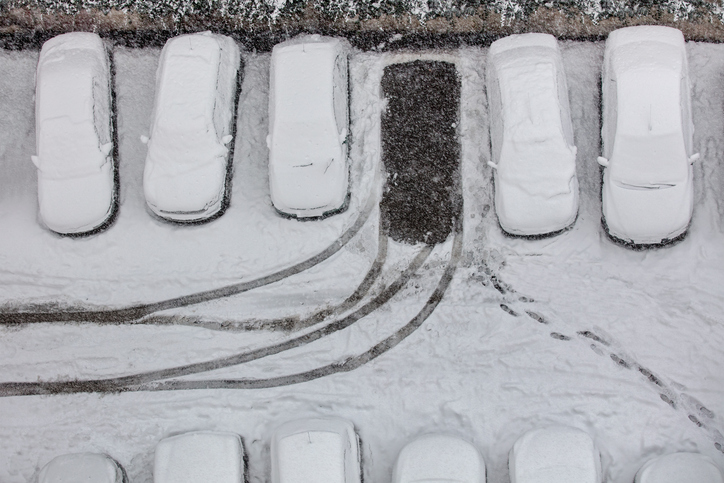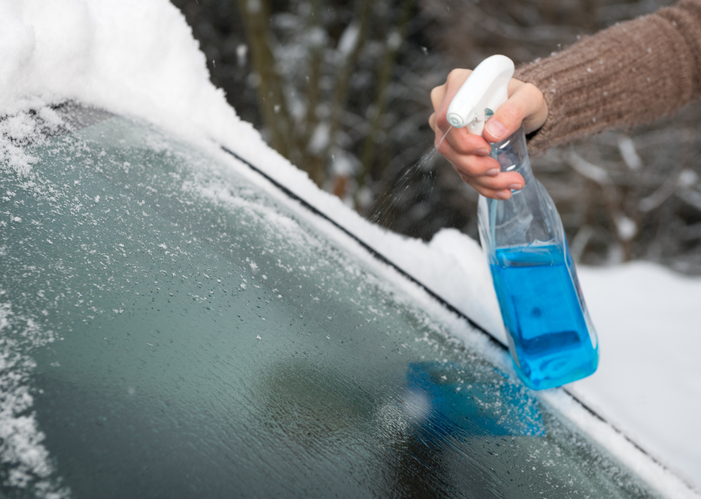You’re late for work, have the kids to drop off at school and your windscreen is frozen solid – what do you do? Reach for the ice scraper? Whip out the de-icer? Or do what many motorists are guilty of: switch on the kettle and let hot water do the legwork for you?
No driver wants to leave their warm house earlier to de-ice the car, but pouring hot water on the windscreen isn’t the answer. The extreme temperature change can crack or shatter the glass, so resorting to hot water to fix your frost issue simply isn’t worth the risk.
In this guide, we look at some of the best ways to quickly and safely de-ice your car. Use the links below to navigate around the guide.
- Using Water to De-Ice Your Car – What’s the Problem?
- Tips to Help Speed Up De-icing – and Avoid a Frozen Windscreen Altogether
- Does De-icer Work and is it Worth Paying For?
Using Water to De-Ice Your Car – What’s the Problem?
While many drivers know the dangers of using very hot water to de-ice their car, some still reach for the kettle in the belief that is the most effective way of clearing the windscreen. But just what kind of danger does boiling or very hot water pose to you and your car on a cold day?
- Cracked windscreen – As touched on above, hot water can cause cracks to appear on the windscreen due to the sudden change in temperature. If you use boiling water on a very cold day, the glass could even shatter, leaving you with a very pricey repair bill – and all for the sake of a few minutes.
- Damaged paintwork – Pour scalding hot water on the windscreen, and you run the risk of damaging the paintwork as the water runs off. Boiling hot water can melt the protective wax layer on the paint and leave a white watermark stain, which can be tough to remove.
- Steam burns or scalding – It can be incredibly easy to burn yourself while pouring hot water on a windscreen, either from the water itself or from the steam produced when the water hits the ice. Don’t risk it!
Now that we’ve debunked using hot water to de-ice your car, you’re probably thinking, what about lukewarm water?
While it’s less likely that your windscreen will crack when using cooler water, we still wouldn’t recommend it. The downside to using lukewarm water to de-ice a car is that, on particularly cold days, the water could quickly freeze, making the problem worse.
By pouring tepid water on a frozen windscreen, you run the risk of being left with a thick layer of ice that’s very difficult to remove, and could result in you scratching the glass with the scraper. For this reason, you should always keep a tin of quality de-icer in your car, as it really is the best way of safely and effectively removing ice.
Tips to Help Speed Up De-icing – and Avoid a Frozen Windscreen Altogether
De-icing your car is a chore that can leave you longing for the warmer days of spring, but there are things you can do to speed up the process and make it a little more bearable – or else remove the need to scrape ice altogether.
Here are our top tips on how to quickly and safely de-ice your car and get on the road.
- Apply de-icer the night before – If the weather forecast is predicting a frosty night, consider applying de-icer spray to the car windows before you go to bed. This will inhibit the build-up of ice overnight, making it easier to remove the light layer of frost in the morning.
- Score thick ice with a scraper before applying de-icer – If the ice is particularly thick after a hard frost, score it with your scraper before applying de-icer. This will help the formula penetrate more effectively, for a faster melt-time.
- Have everything prepared and ready – Another tip that can help you manage your time in a morning is to have everything ready the night before. Gather your scraper, de-icer and car keys together so you’re not rummaging for anything during the morning rush hour – and don’t forget your gloves either.
- Park your car in the garage – If your garage is cluttered up with junk, leaving little room for your car, perhaps it’s time you had a good sort out. Parking your car inside every night might seem like a lot of hassle when you have to back it out every morning, but it’ll save you from the pain of having to scrape the windscreen, too.
- Try a windscreen cover – Purpose-built windscreen covers claim to prevent a build-up of ice when attached to the windscreen and left overnight. Just make sure rain and snow aren’t forecast, as the cover could get stuck to the glass due to frozen excess moisture.
Does De-icer Work and is it Worth Paying For?
If you’re tired of spending 20 minutes every morning scraping ice from your car, why not speed up the process with a quality de-icer product?
De-icer works by breaking down ice crystals, and therefore making it easier to remove with a scraper. Simply spray it on your frozen windscreen and you’ll find that the ice is much easier to remove. Alternatively, the product can be left to work and will gradually melt through the ice without the need to scrape it off.
Prestone Rapid De-Icer gets to work in seconds to remove ice from your windscreen, and is effective in extreme temperatures down to -40°C. The product, which is available as a trigger spray or aerosol, also works to prevent dangerous refreezing, so you can get on with your day without worrying about visibility problems.
For more information on this and other products in the Prestone range, click to visit the homepage.



